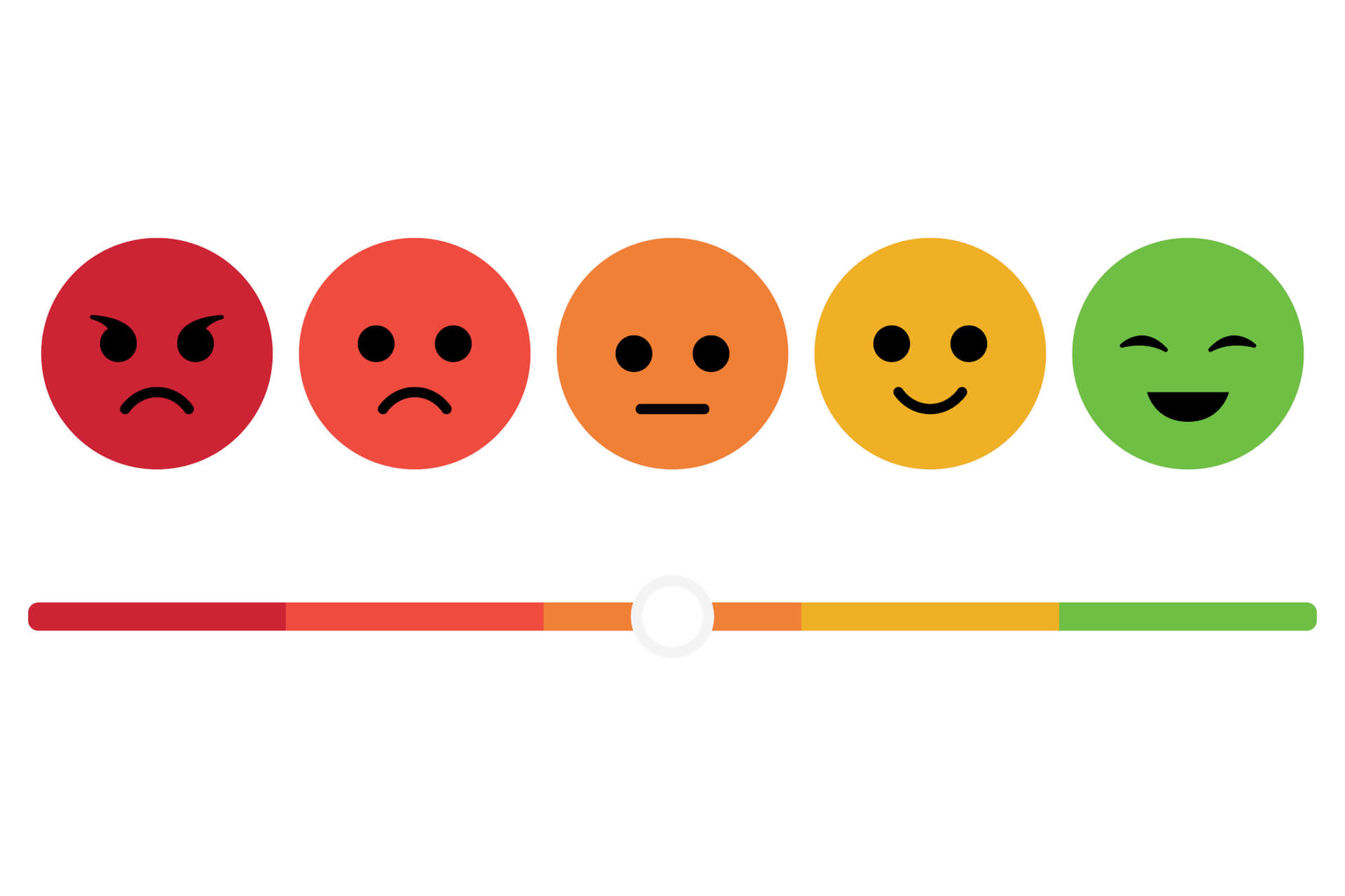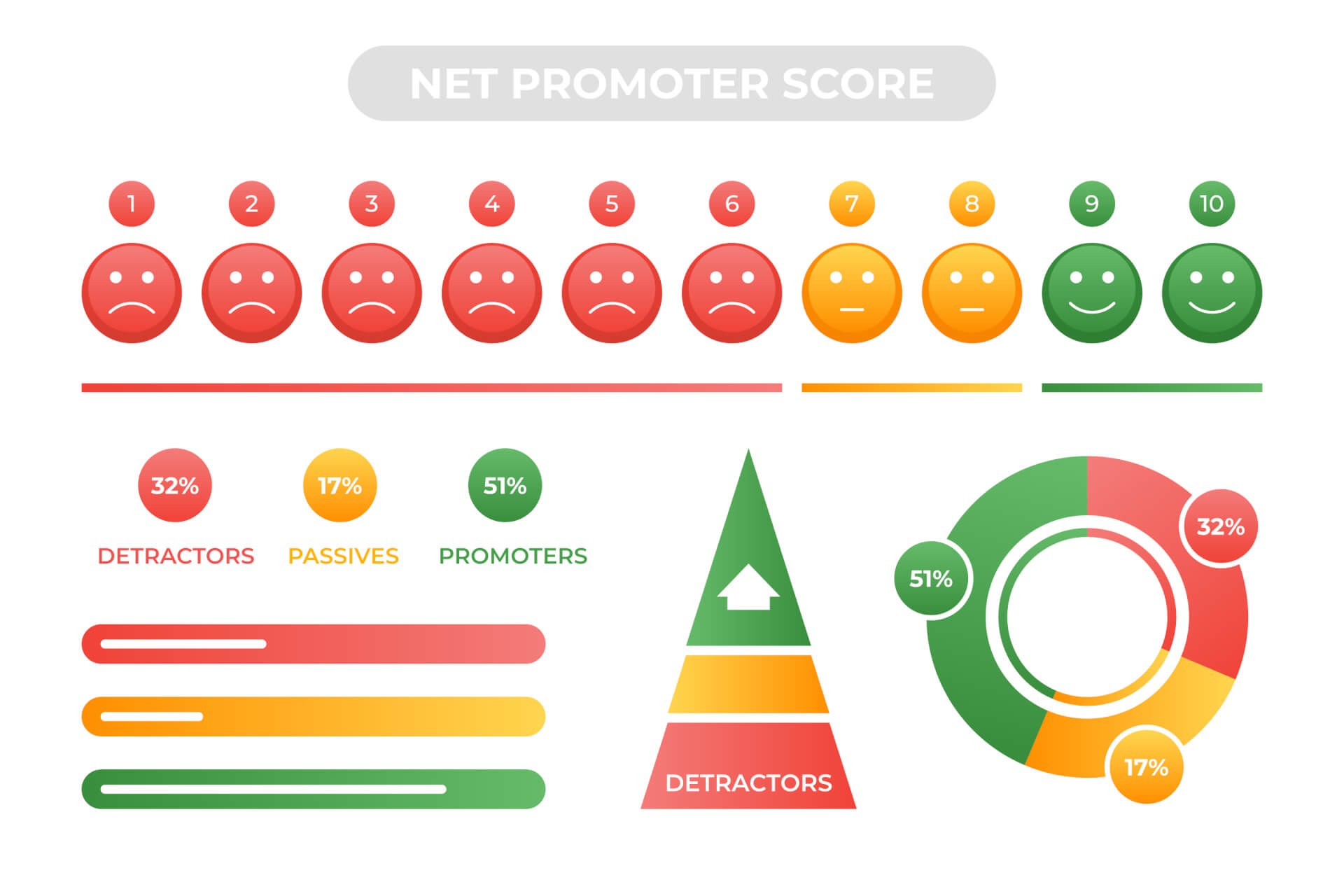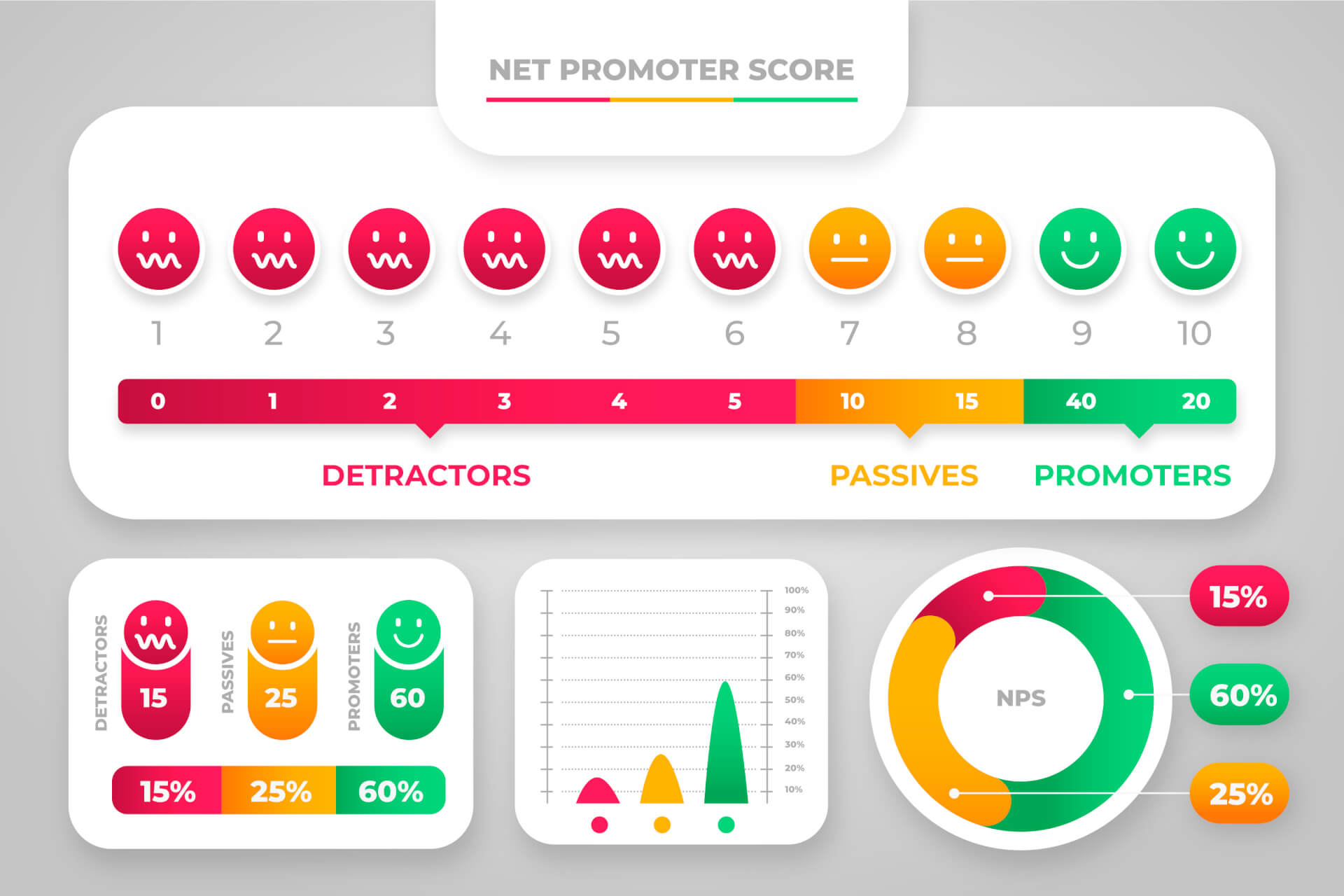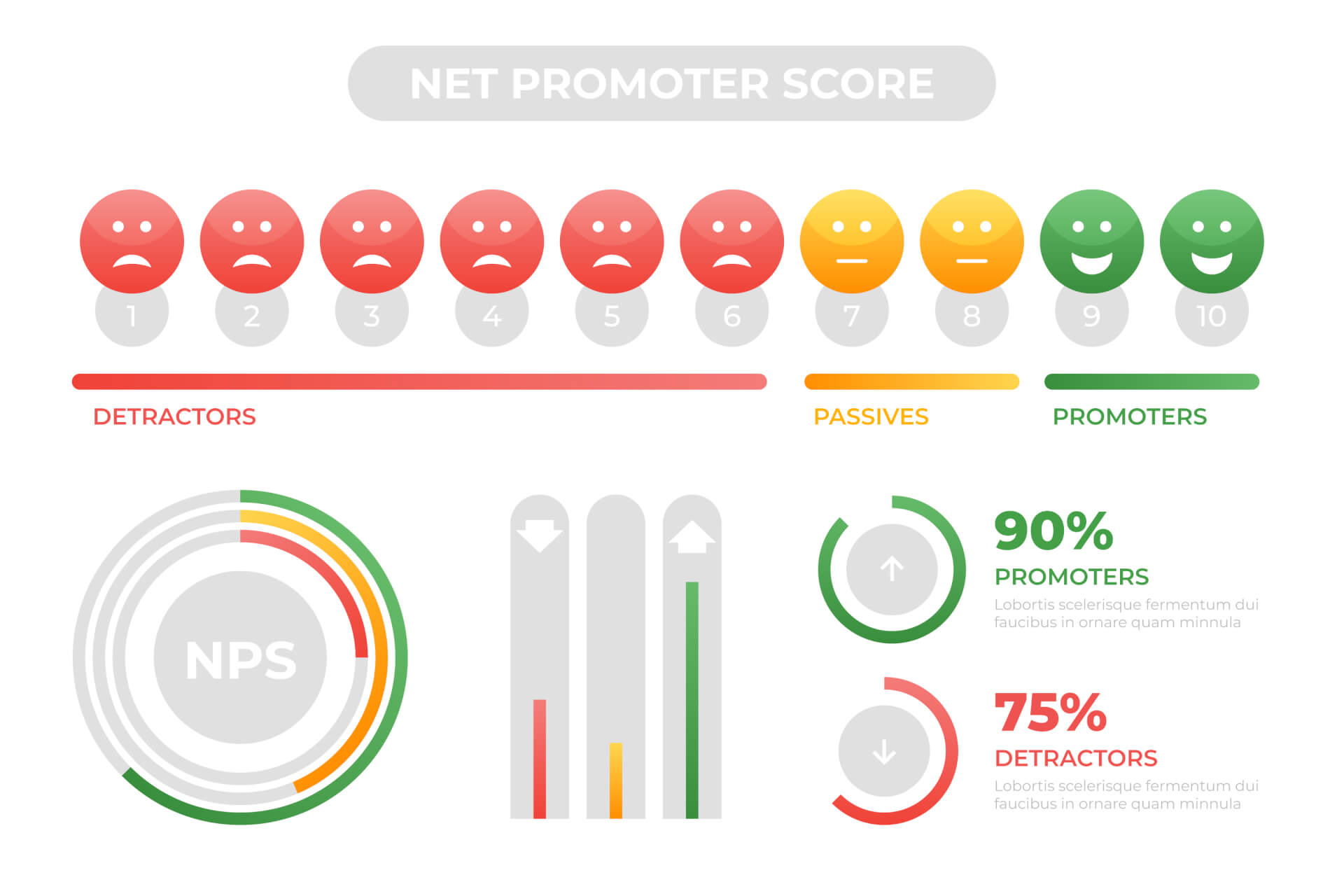
Table of Contents
- NPS Vs. CSAT - Definition
- Importance of Understanding Both Metrics
- Advantages of NPS
- Understanding Customer Satisfaction Scores
- Survey metric Limitations
- Comparative Analysis: NPS vs. Customer Satisfaction Scores
- Practical Applications in Business
- Industry-Specific Insights
- Best Practices for Measuring Customer Feedback
- Challenges and Solutions
- Future Customer Survey Trends
- Conclusion
NPS Vs. CSAT - Definition
- Net Promoter Score (NPS) is a metric used to gauge customer loyalty and satisfaction by asking one simple question:
"How likely are you to recommend our product/service to a friend or colleague?"
The responses are used to categorize customers into Promoters, Passives, and Detractors, which helps businesses understand their customer base's overall sentiment. - Customer Satisfaction Scores (CSAT) measure how satisfied customers are with a company's products or services.
It typically involves asking customers to rate their satisfaction on a scale, often ranging from 1 to 5 or 1 to 10.
This score provides a straightforward insight into customer contentment and areas needing improvement.
Importance of Understanding Both Metrics
Understanding both NPS and Customer Satisfaction Scores is crucial for businesses as these metrics provide insights into different aspects of customer experience.
- While NPS focuses on customer loyalty and the likelihood of recommendations,
- CSAT provides a snapshot of customer satisfaction with specific interactions or products.
Together, they offer a comprehensive view of customer sentiment and can guide strategic decisions to enhance customer experience.
Advantages of NPS
- Simplicity: Easy to understand and implement.
- Benchmarking: Allows comparison across industries and competitors.
- Predictive Power: Correlates strongly with business growth.
- Actionable Insights: Identifies promoters and detractors, enabling targeted follow-ups.
Understanding Customer Satisfaction Scores

Historical Background
Customer Satisfaction Scores have been used for decades to measure customer happiness with products, services, or specific interactions.The concept of measuring satisfaction has evolved with the development of more sophisticated survey tools and methodologies.
Calculation Method
CSAT is typically measured by asking customers to rate their satisfaction with a product or service on a scale (e.g., 1 to 5, where 1 is very dissatisfied and 5 is very satisfied). The CSAT score is then calculated as the percentage of respondents who rate their satisfaction as 4 or 5 (or equivalent high scores).
Interpretation of Scores
CSAT scores are straightforward: higher scores indicate greater customer satisfaction. They provide immediate feedback on specific aspects of the customer experience and are often used to assess the impact of recent changes or new products.
Advantages of Customer Satisfaction Scores
- Specific Feedback: Offers detailed insights into specific aspects of customer interactions.
- Flexibility: Can be adapted to measure satisfaction with various aspects of a business.
- Direct Correlation: Strongly correlates with customer retention and loyalty.
Survey metric Limitations
Limitations of NPS
- Lack of Detail: Provides limited insight into the reasons behind customer sentiment.
- Cultural Bias: Responses may vary significantly across different cultures.
- Overemphasis on One Metric: Sole reliance on NPS can overlook other important customer feedback aspects.
Limitations of Customer Satisfaction Scores
- Short-Term Focus: May not reflect long-term customer loyalty.
- Survey Fatigue: Frequent surveys can lead to lower response rates and quality.
- Context Sensitivity: Scores can be influenced by external factors unrelated to the actual service or product quality.
Comparative Analysis: NPS vs. Customer Satisfaction Scores
Key Differences
- Focus: NPS measures customer loyalty and the likelihood of recommendation, while CSAT measures satisfaction with specific interactions or products.
- Scope: NPS provides a broader view of customer loyalty, whereas CSAT offers more detailed insights into specific areas of customer experience.
- Metric Calculation: NPS uses a single question to classify customers, while CSAT uses a scale to gauge satisfaction levels.
Key Similarities
- Customer Feedback: Both metrics rely on direct customer feedback.
- Actionable Data: Both provide insights that can guide improvements in customer experience.
- Correlation with Business Performance: Both metrics are linked to key business outcomes like retention and growth.
Use Cases for Each Metric
- NPS: Best used for measuring overall customer loyalty, predicting business growth, and identifying brand advocates.
- CSAT: Ideal for assessing satisfaction with specific interactions, services, or products and for identifying immediate areas for improvement.
 Reading recommendation: If this first comparison isn't enough for you and you would like to learn more about the different metrics for measuring satisfaction, we recommend our blog article "The difference between NPS and other customer satisfaction metrics"
Reading recommendation: If this first comparison isn't enough for you and you would like to learn more about the different metrics for measuring satisfaction, we recommend our blog article "The difference between NPS and other customer satisfaction metrics"
Practical Applications in Business

Using NPS for Customer Loyalty
NPS helps businesses identify promoters who can act as brand ambassadors and detractors who need attention to prevent churn.
Strategies can be developed to enhance promoter experiences and address detractor concerns.
Using Customer Satisfaction Scores for Product Improvement
CSAT scores provide detailed feedback on specific products or services, allowing businesses to pinpoint issues and make targeted improvements.
This can lead to higher customer satisfaction and retention.
Industry-Specific Insights

Retail
In retail, NPS can be used to gauge overall customer loyalty, while CSAT can assess satisfaction with specific touchpoints like checkout experiences, product quality, and customer service.
Healthcare
Healthcare providers can use NPS to measure patient loyalty and likelihood of recommendation, while CSAT can assess satisfaction with specific aspects of care, such as wait times, doctor interactions, and treatment outcomes.
Technology
Tech companies often use NPS to measure user loyalty and predict growth, while CSAT helps gauge satisfaction with specific features, customer support, and user experience.
Hospitality
In the hospitality industry, NPS can provide insights into guest loyalty and potential for repeat business, while CSAT can measure satisfaction with specific aspects of the guest experience, such as room cleanliness, service quality, and amenities.
Best Practices for Measuring Customer Feedback

Survey Design
Design surveys that are clear, concise, and relevant to the customer experience.
Ensure questions are easy to understand and answer.
Timing and Frequency of Surveys
Balance the need for feedback with the risk of survey fatigue.
Consider the timing of surveys to capture relevant feedback without overwhelming customers.
Analyzing Data
Use robust analytical tools to interpret feedback data. Look for trends, patterns, and actionable insights that can drive improvements.
Implementing Feedback
Develop a systematic approach to act on feedback. Prioritize actions based on impact and feasibility, and communicate changes to customers to close the feedback loop.
 Recommended reading: In our blog article we answer the question, "Why surveying using NPS is an ongoing process and not a one-time survey."
Recommended reading: In our blog article we answer the question, "Why surveying using NPS is an ongoing process and not a one-time survey."
Challenges and Solutions
Common Pitfalls in Measuring NPS
- Bias in Responses: Ensure a diverse and representative sample to avoid skewed results.
- Misinterpretation: Train teams to understand what NPS scores represent and how to use them effectively.
Common Pitfalls in Measuring Customer Satisfaction
- Survey Design Flaws: Ensure questions are well-designed to avoid leading or ambiguous responses.
- Response Rates: Implement strategies to improve response rates, such as offering incentives or making surveys more accessible.
Overcoming Data Collection Challenges
Use multiple channels to collect feedback, including online surveys, phone interviews, and in-person interactions. Ensure data is collected consistently across different touchpoints.
Ensuring Representative Feedback
Use sampling techniques to ensure feedback is representative of your entire customer base. Avoid over-reliance on feedback from only a subset of customers.

Reading recommendation: In addition to the things that need to be taken into account, the NPS has a number of advantages. Our blog article describes "Benefits of NPS surveys that you don't know yet"
Future Customer Survey Trends

The Evolution of Customer Feedback Metrics
Customer feedback metrics are evolving with advancements in technology, becoming more integrated and comprehensive.
New metrics and methodologies are being developed to provide deeper insights.
Integration with AI and Machine Learning
AI and machine learning are transforming how businesses analyze customer feedback, enabling real-time sentiment analysis and predictive insights that can drive proactive improvements.
Predictive Analytics in Customer Feedback
Predictive analytics can help businesses anticipate customer needs and behaviors, allowing for more personalized and effective customer engagement strategies.
Conclusion
Summary of Key Points
NPS and Customer Satisfaction Scores are both valuable metrics that provide different but complementary insights into customer sentiment.
Understanding and leveraging both can help businesses improve customer experience, loyalty, and growth.
Final Thoughts on NPS and Customer Satisfaction Scores
Using a combination of NPS and Customer Satisfaction Scores allows businesses to capture a holistic view of customer sentiment.
By regularly measuring and acting on these metrics, businesses can drive continuous improvement and foster stronger customer relationships.
 Reading recommendation: If this article helped you and you would like to find out more about the Net Promoter Score, continue reading here: “The Net Promoter Score – Basics and Areas of Application”
Reading recommendation: If this article helped you and you would like to find out more about the Net Promoter Score, continue reading here: “The Net Promoter Score – Basics and Areas of Application”